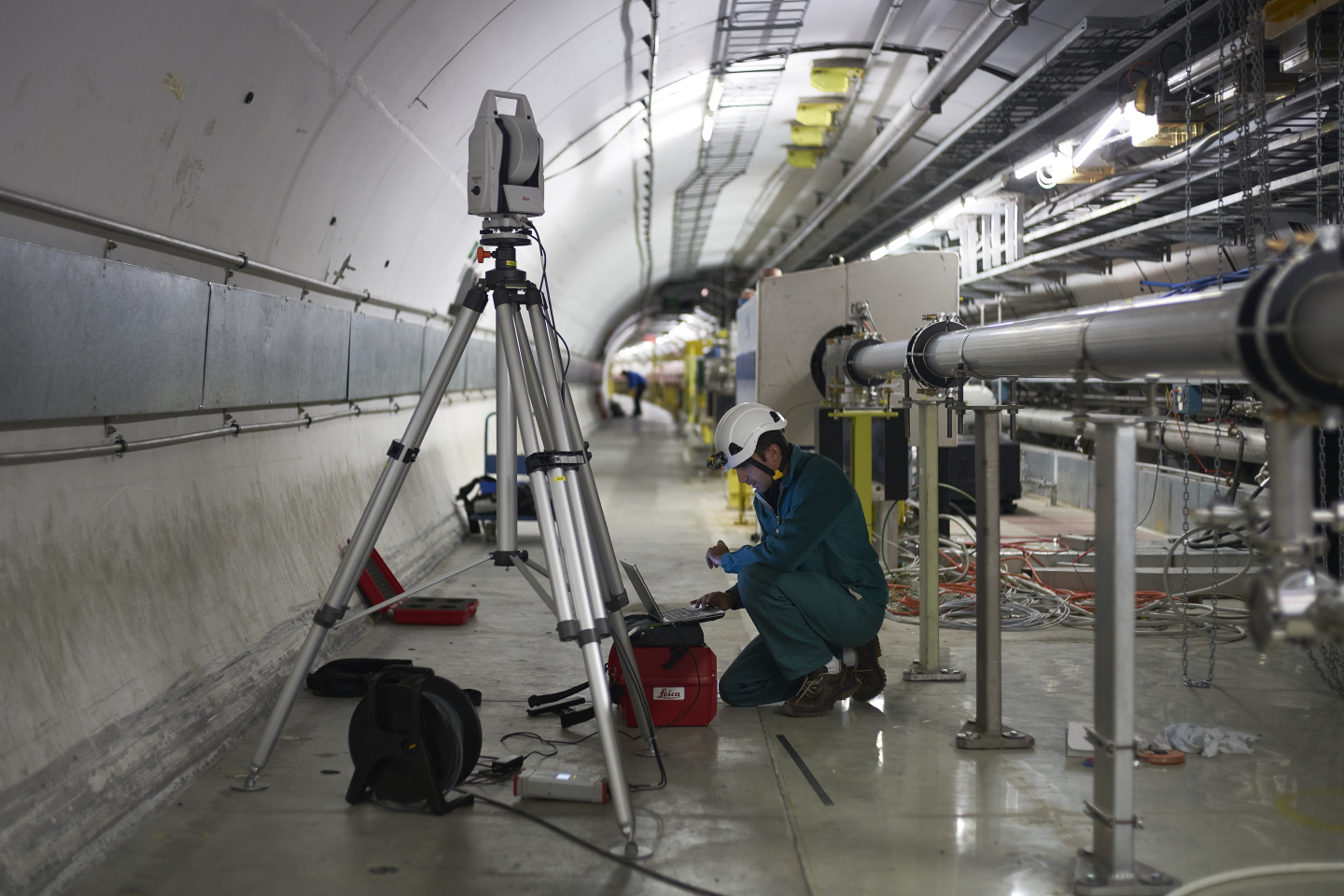Accelerator operators can perform amazing acrobatics with particle beams, most recently in the Super Proton Synchrotron (SPS), CERN’s second-largest accelerator. For the first time, they have successfully injected a beam of partially ionised xenon particles into the SPS and accelerated it. Before they were injected into the SPS, these atoms were stripped of 39 of their 54 electrons.
During the first test, which took place in September, the beam was injected into the SPS ring and circulated for about one second. Now, the beam has been accelerated for the first time, reaching an energy of 81.6 gigaelectronvolts (GeV) per nucleon.
What makes this performance so remarkable is that these beams of partially ionised xenon atoms are extremely fragile and have a very short lifespan. If an atom loses just one of its 15 electrons, it changes orbit and is lost. “The SPS vacuum is not quite as high as that of the LHC. The residual gas molecules present in the vacuum chamber disturb the beam, which explains why it is lost quite quickly,” says Reyes Alemany, who is responsible for the SPS tests. “But keeping the beam going for one cycle in the SPS is already a very promising result!”
So why are accelerator physicists experimenting with these atoms? It’s to test a novel idea: a high-intensity source of gamma rays (photons with energies in the megaelectronvolt (MeV) range). This gamma factory, as it is known, would generate photons of up to 400 MeV in energy and at intensities comparable to those of synchrotrons or X-ray free-electron lasers (XFELs). XFELs produce high-intensity beams of X-rays – that is, photons of an energy of less than about 100 kiloelectronvolts (keV).
“A source of that kind would pave the way for studies never done before in fundamental physics, in the fields of quantum electrodynamics or dark matter research,” explains Witold Krasny, a CNRS physicist and CERN associate who founded the project and leads the work group. “It also opens the door for industrial and medical applications.” It could even serve as a test bench for a future neutrino factory or muon collider.
The principle is to accelerate partially ionised atoms and then excite them using a laser. As they return to their stable state, the atoms release high-energy photons.
The team took advantage of the presence of xenon in the accelerator complex to carry out this first test without disrupting the other ongoing physics programmes. Next year, during the LHC heavy-ion run, the team will repeat the experiment using ionised lead atoms, which will be stripped of all but one or two electrons. Those beams will be much more stable; having fewer electrons means that the atoms are less at risk of losing them. In addition, their electrons are only found in the “K” shell, the closest to the nucleus, and therefore have a stronger link to the nucleus than in the xenon atoms. The heavy-ion beams could be accelerated first in the SPS and then in the LHC.
The gamma factory project is part of the Physics Beyond Colliders study, which was launched in 2016 with the goal of investigating all possible non-collider experiments, particularly those that could be done using CERN’s accelerator complex. Hundreds of scientists are expected to attend the annual Physics Beyond Colliders conference at CERN at the end of November.

